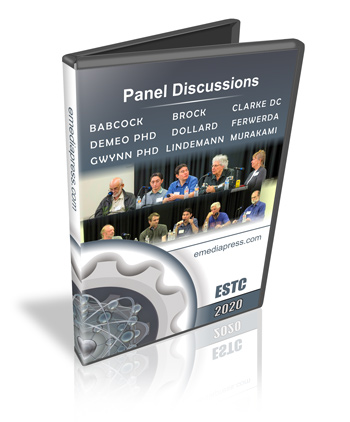It is known by those who are skilled in the art of some overunity electrical devices that there is more going on with the electrical current than the typical electron flow theory can account for.
For years, John Bedini has said that current meters that measure electron current only measure what is wasted. Eric Dollard has said that energy is the rate that electricity is being destroyed, which is the same thing since that current multiplied by voltage over time is energy, the destruction of organized potential, and that is what the meters are measuring.
In Jim Murray’s SERPS device, which has demonstrated almost 50 times more work being done than the net draw from the power supply, Jim has said that there is extra energy in the current. However, most conventionally trained engineers simply cannot comprehend how this can be.
For example, if we have an incandescent light bulb in an electrical circuit and we supply electricity to this load, the bulb will light up. However, a common idea is that the bulb is “burning up” all the electricity that passes through it, but nothing could be further from the truth.
In the SERPS for example, electricity is passed through a resistive load and then a capacitor is charged on the other side of the load. Then, at the right time, the capacitor is discharged backwards through the load back to the source (generator) turning it into a motor for that moment. So, if the generator is only a generator for 1/2 the time and is a motor 1/2 the time, the motor or prime mover moving the generator to begin with sees virtually no net load.
That demonstration alone is proof that there are some other properties to electrical current than what can be accounted for by simple electron current theory alone. There is something extra and the so-called electron current, which is measurable by common current meters cannot explain or account for it all – just as Bedini and Dollard has hinted.
A couple years ago, a very important announcement was made during research into “cuprate superconductors”, which contain copper, which revealed that, “electrons are not enough to carry the current. ” Discussion on this “violation” appears to go back to the 1990’s when searching online references.
Although these discussions focus on a very specific sets of conditions required to elicit such violations of common electron current theory, the implications are staggering when reading between the lines.
Whether superconductors are used or not, the fact is that there is more current being carried than can be accounted for by the electrons. So, what else is carrying the current? And does this actually give more credibility to some overunity claims where the end results are more than what can be accounted by measuring the output electrically?
For example, in the Bedini SG, if one were to measure the electrical output of a the machine, it is always less than what actually winds up in the battery. Stating it another way, there is more that winds up in the battery than can be measured leaving the circuit charging it. There are some interesting things that are happening in the battery, which allow the battery to start receiving free source potential from it’s environment, which doesn’t come from the electrical circuit – it’s related but not directly proportional.
Now, this understanding that shows that there is more to the current than the electrons can account for suggest other means for transferring potential to the battery, which probably can’t be measured by the meters. It is understood that there absolutely is more that winds up in the battery than can be measured leaving the circuit, which is indisputable and anything like this that can contribute to a clearer understanding of these kinds of observations is more than welcome.
In the article from a few years ago, Electrons are not enough: Cuprate superconductors defy convention, The below diagram shows that there is more electrical charge than can be accounted for by electrons alone.

“Luttinger’s theorem states that the number of electrons in a material is the same as the number of electrons in all of its atoms added together.”
“The researchers developed a model outlining the breakdown of Luttinger’s theorem that is applicable to cuprate superconductors, since the hypotheses that the theorem is built on are violated at certain energies in these materials. The group tested it and indeed found discrepancies between the measured charge and the number of mobile electrons in cuprate superconductors, defying Luttinger.”
“…Something other than electrons carries the current.”
“Electrons are charged. Therefore, if an electron does not contribute to the charge count, then there is a lot of explaining to do.”
They even state, “Now the researchers are exploring possible candidates for current-carriers, particularly a novel kind of excitation called unparticles.”
Although the defiance of Luttinger’s Theorem is is not at astronomical proportions in this example, a deviation from the predicted amount is still a deviation. Something either follows the “rules” or it doesn’t.
The admission that there might be something other that carries the current is actually quite bold and could potentially rattle the cages of the classical electron flow theory. This isn’t a surprise for those involved in research into overunity systems, but it is a surprise to see conventional references admitting such a thing.
Here is the full article: http://phys.org/news/2013-03-electrons-cuprate-superconductors-defy-convention.html
And here is the original paper: http://link.aps.org/accepted/10.1103/PhysRevLett.110.090403


